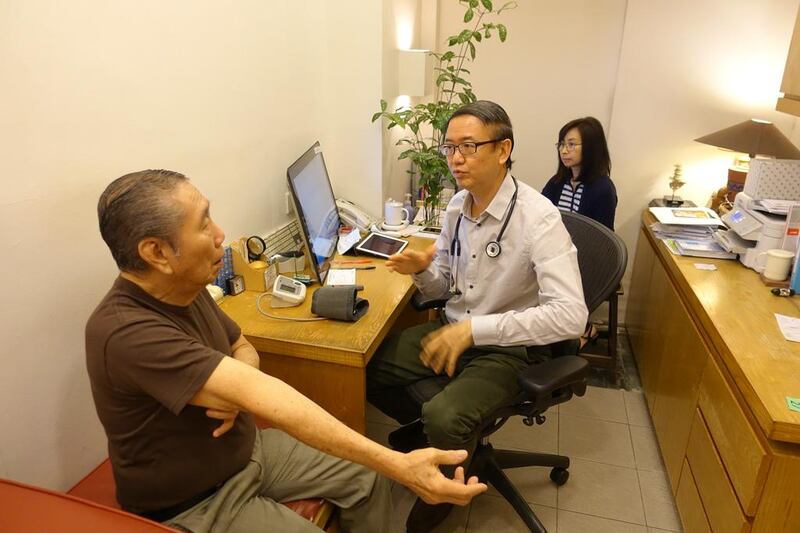SINGAPORE // Tucked away in one of the poorest parts of Singapore is the Manhattan Medical Centre – a 52-square-metre private general practice that is nearly always a hive of activity.
More than half the patients who come here are above the age of 50, and they typically come from the lower to middle-income households in the nearby Jalan Kukoh neighbourhood.
Considered the so-called “sandwiched middle class”, they make up about 60 per cent of the population, and are neither rich enough to be unconcerned about costs nor poor enough to be eligible for full subsidies. They have been the target of a slew of healthcare benefits released by the government since 2012.
“In the past, for me as a GP clinic in the ‘slum’ of Singapore, I was already charging very low rates,” said Dr Goh Wei Leong, 57, who has been running Manhattan Medical Centre for 30 years.
“Now the actual cost to the patient is even lower. The patient pays less because of the government subsidies.”
Dr Goh’s clinic is one of about 1,500 privately owned clinics in Singapore which provide primary healthcare to about 80 per cent of the population. The remaining 20 per cent go to government-run clinics known as polyclinics which charge less.
“The polyclinics were bursting,” said Dr Goh.
What the new subsidies did was encourage more polyclinic patients to switch to private clinics.
At government hospitals, patients can choose non-subsidised treatment, known as private care, or varying levels of subsidised care. The treatments and medicines are the same but amenities and costs differ.
Sheralyn Ong, 42, chose subsidised care at the government-owned National University Hospital when she discovered she had breast cancer three years ago.
“I think medical expenses are totally exorbitant if you go the private route but if you go the subsidised route, a lot of consultations and medications and treatments are subsidised quite well by the government,” said the financial analyst. Ms Ong was cleared of cancer after 10 months of radiotherapy and chemotherapy, and did not have to pay anything as her employer’s medical insurance covered the remaining costs not covered by subsidies.
“I have no complaints about Singapore health care,” she said.
But not everyone agrees.
“Singapore is very expensive,” said a 50-year-old Singaporean taxi driver who did not want to be named. “If I get warded in hospital, that is going to be very expensive.”
jtan@thenational.ae

Singapore Health Care
¦ The world's best health care? How Singapore's hybrid model is the envy of other countries
¦ Singapore's unique healthcare model - in pictures
¦ Singaporean health care balances free-market principles with pragmatic intervention





